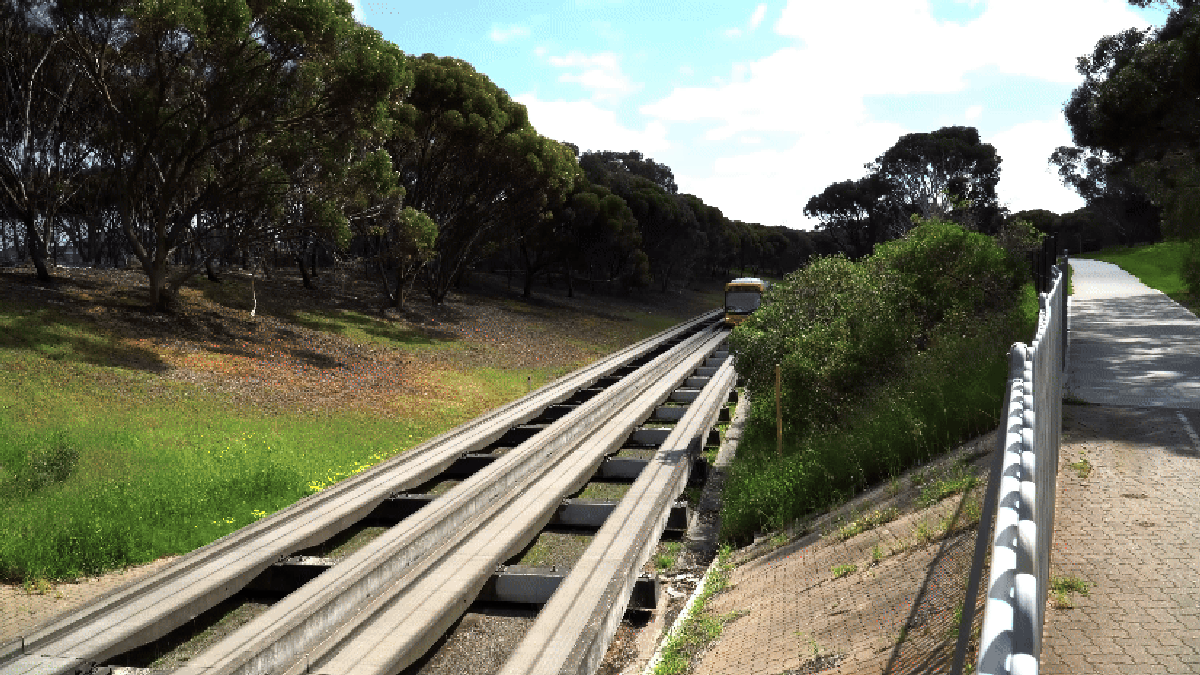It’s tomorrow in Australia, and Australians must really know how to put that extra day to use. Just look at one of the more unique facets of their public transportation system that puts normal buses onto train track-like concrete tracks, effectively allowing buses to instantly become trains. In Adelaide, Australia’s fifth-most populous city with around 1.4 million residents, the O-Bahn’s concrete tracks allow for unimpeded travel between the northeastern suburbs and Adelaide’s central business district.
You might have ascertained that O-Bahn is an awfully German name for this form of Australian public transit, and you’re correct. The O-Bahn concept was actually developed in the ’70s by Daimler-Benz. Adelaide landed on the O-Bahn concept over a light rail or other forms of public transportation because of the array of the political and geographic challenges that constructing a rail system would cause. This system minimized the impact on Adelaide’s already burgeoning business district, while still allowing for efficient and unimpeded mass transit from the suburbs.
The O-Bahn has 12 kilometers of concrete tracks that begin at Tea Tree Plaza in Modbury, a north-eastern suburb of Adelaide, and ends at the Adelaide ring road in Hackney where the buses leave the tracks and continue the trip as normal on-road buses. There are two stops along the way in different Adelaide suburban communities, and the system was completed in 1989.
Each direction of traffic on the O-Bahn gets two dedicated concrete tracks that the bus’ tires drive on, and there are vertical curbs on the outer edges of the tracks that guide accessory wheels on each corner of the bus and eliminate the need for the bus driver to steer. The guide wheels ride along the vertical curbs on the edges of the tracks, and the bus driver still controls acceleration and braking. The Drive reports:
The key benefit of the O-Bahn system is simply one of space. Consider a two-way dedicated unguided busway, also known as “a road without any cars.” Even a moderately trafficked two-lane road should be around 30 feet wide at minimum, as per Austroads design recommendations. This is necessary for wide vehicles to pass safely, given the natural wandering of a human driver in a lane. However, with two buses running on a guided concrete track, there’s no need for extra space. Two O-Bahn tracks only need a corridor about 20 feet wide, allowing the eight-foot-wide buses to pass in each direction safely.
That width-saving might not sound like much. However, when it comes to finding space for a new transportation artery through a crowded city, every last foot matters. It can result in huge savings by reducing the amount of property acquisition required to make room for the new project.
Given the massive success of the O-Bahn in Adelaide, its surprising that more regions haven’t introduced similar systems. Pittsburg briefly experiments with the rails, but it never really took off. As much as we love cars here at Jalopnik, sitting in traffic at least twice a day while commuting to and from work is no fun. Elegant and thoughtful mass transit solutions like the O-Bahn eliminate the need for thousands of daily commuters to clog up the roads, which makes life better for everyone, and it means when you do choose to take your car out, you shouldn’t hit as much traffic. What’s not to like?

